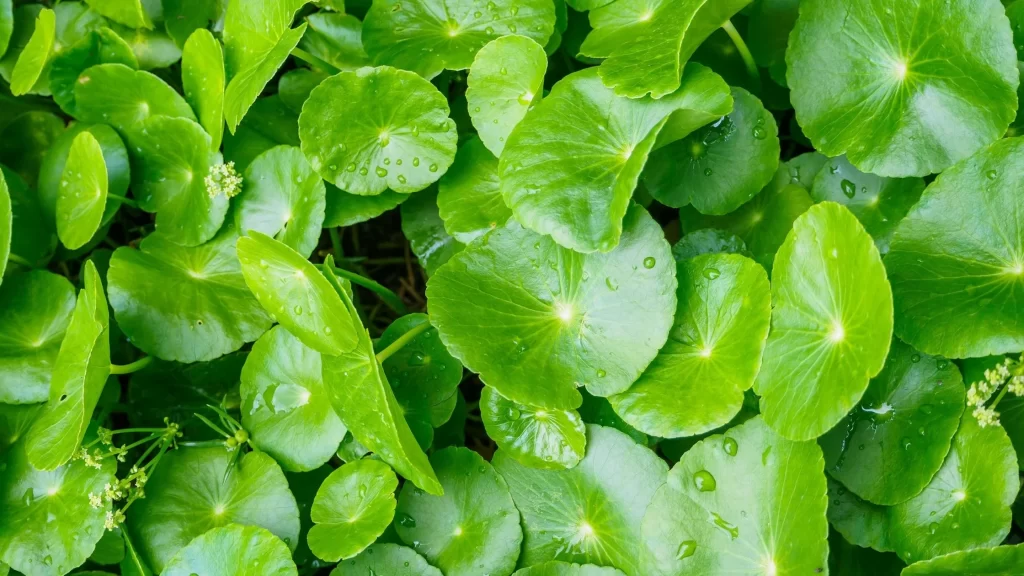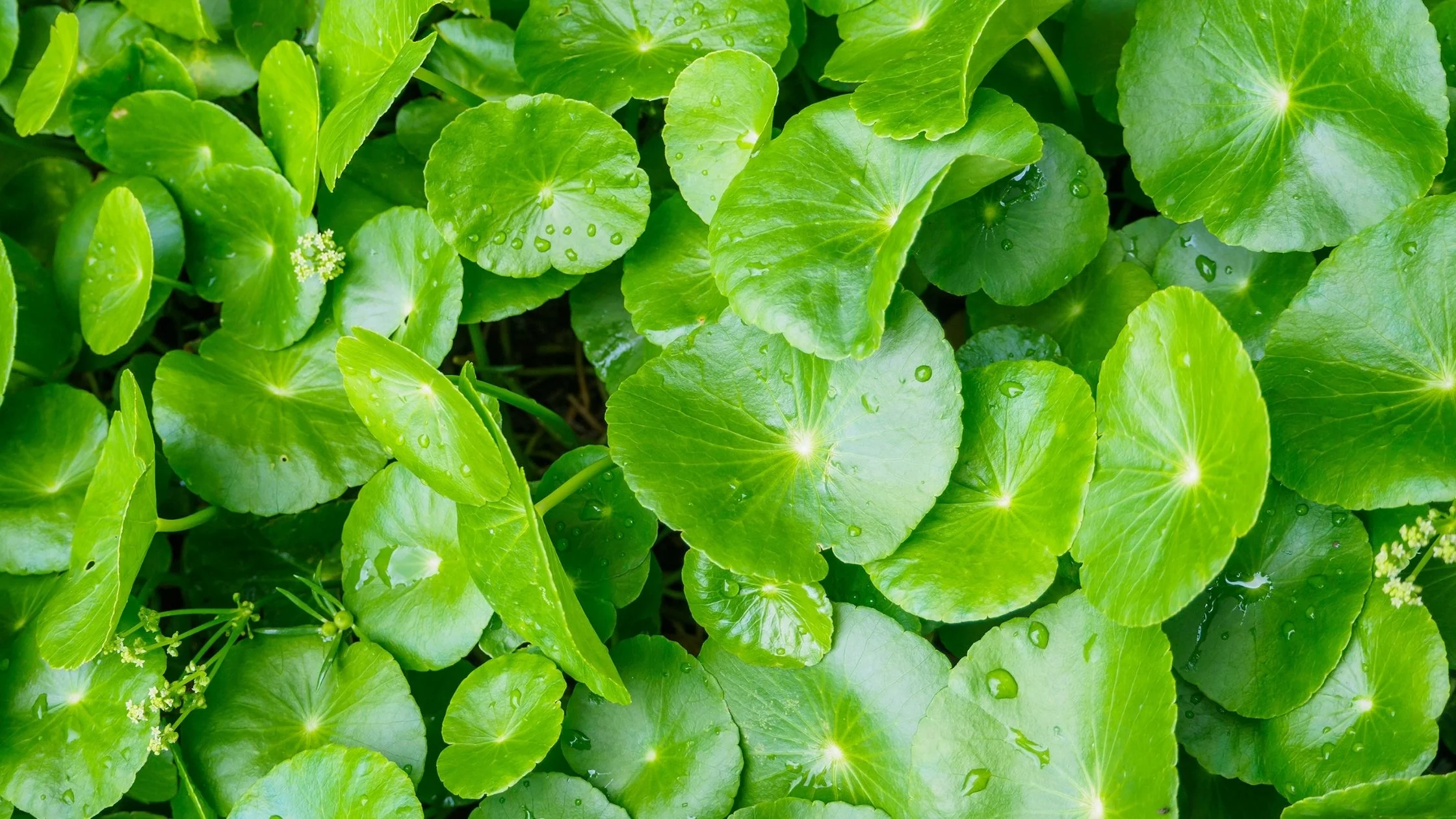The skin serves as our first line of defense against the environment, but it’s constantly under threat from aging, pollution, and chronic conditions. These factors can compromise its structure, slowing healing, triggering inflammation, and accelerating aging. In the search for natural solutions, Centella asiatica—known as Gotu Kola—has emerged as a trusted botanical with both traditional and modern relevance. Rich in triterpenoids, flavonoids, and phenolic acids, this herb shows great promise for skin regeneration, soothing, and protection.
Key Findings
• Wound Healing: Compounds like asiaticoside and madecassoside enhance fibroblast proliferation, collagen synthesis, and antioxidant activity, accelerating wound repair and scar quality.
• Anti-inflammatory & Soothing: Triterpenoids like asiatic acid inhibit inflammatory mediators (iNOS, COX-2, TNF-α), soothing irritated and acne-prone skin.
• Anti-aging: The herb improves skin elasticity, hydrates, and boosts type I collagen, possibly via telomerase activation.
• Skin Whitening & UV Protection: Extracts reduce melanin production by ~20% and guard against UV- and pollution-induced oxidative stress.
• Acne Treatment: Its antibacterial and healing actions reduce acne lesions and promote clarity.
• Cancer-Related Skin Repair: Early findings suggest benefit in radiation-related ulceration and chronic skin conditions, thanks to its antioxidant-rich profile.
Centella asiatica has evolved from a traditional remedy to a clinical-grade cosmeceutical backed by evidence. This review highlights its low toxicity and multifunctional potential in dermatology—ranging from wound care to anti-aging and acne treatment. With growing interest in natural skincare, future work could optimize extraction and delivery of key actives, confirming its place in mainstream skin therapeutics.
Link to the study: https://tinyurl.com/u3589jh8


